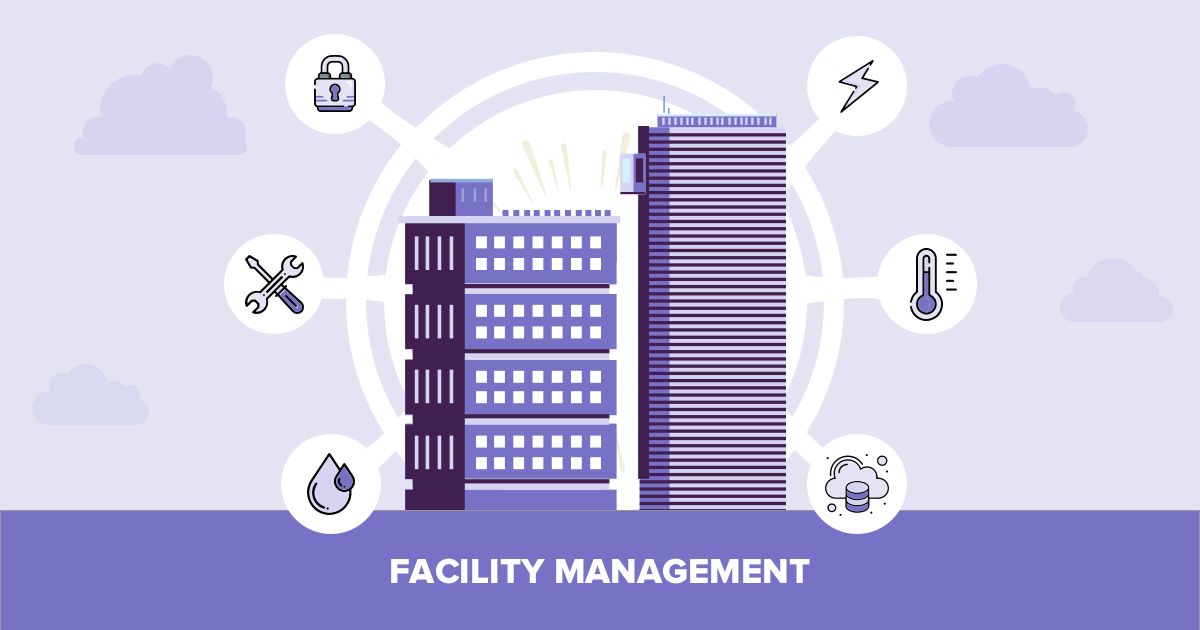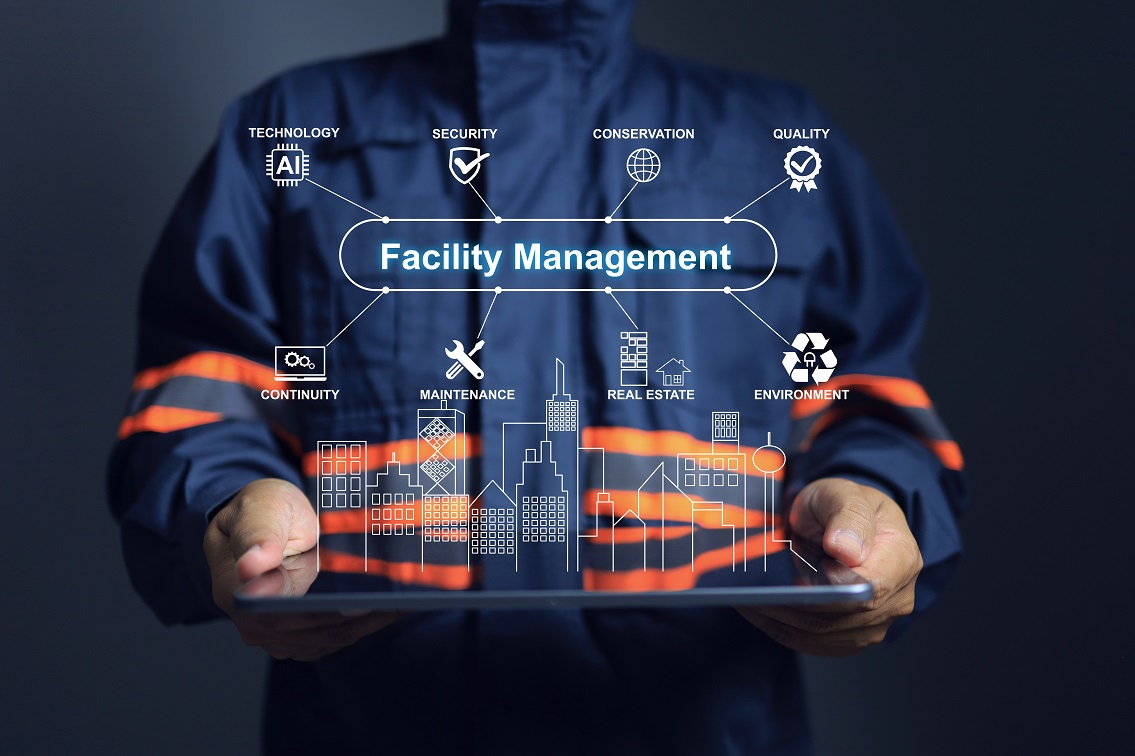Facility Management-- Streamlined Operations and Price Cost Savings
Facility Management-- Streamlined Operations and Price Cost Savings
Blog Article
The Essential Overview to Facility Management: Strategies for Success
Facility management plays an essential role in the general success of a company, working as the backbone that sustains efficiency, performance, and security. By using calculated techniques such as integrated technological solutions and cultivating cross-departmental cooperation, organizations can considerably boost their functional structures. The subtleties of effective facility monitoring extend beyond simple logistics and require a detailed understanding of both qualitative and measurable metrics. As we explore these necessary strategies, a closer evaluation reveals just how they can transform not just facilities, however the very society within an organization itself. What might these makeovers look like in practice?
Understanding Center Monitoring
What constitutes efficient facility management? Effective facility administration includes the coordination of numerous business functions to ensure that constructed environments are risk-free, reliable, and favorable to efficiency. It incorporates the principles of organization, design, and style monitoring to create a smooth operational flow within an organization.
Trick elements of center administration consist of room preparation, upkeep monitoring, and conformity with health and wellness and safety and security guidelines. Space preparation concentrates on optimizing the use of physical sources to sustain business goals, while maintenance administration makes certain that facilities are kept in optimal condition, taking full advantage of lifespan and reducing operational prices. Compliance with regulative and legal criteria is essential, as it safeguards the company against possible obligations and improves its track record.
Furthermore, efficient center management counts on the strategic use of technology, such as Structure Administration Equipment (BMS) and Computer-Aided Facility Monitoring (CAFM) tools. These modern technologies help with real-time surveillance of building systems and improve upkeep procedures (Facility Management). Ultimately, a detailed approach to center management not just advertises functional effectiveness yet also fosters a positive atmosphere for staff members and site visitors alike, driving general business success

Key Strategies for Optimization
Optimizing facility monitoring calls for a critical approach that aligns operational techniques with organizational goals. To achieve this, the very first crucial technique is the execution of incorporated technological solutions. Using sophisticated software application systems permits for real-time surveillance of center procedures, facilitating data-driven decision-making and improving overall effectiveness.
Secondly, normal evaluations of facility performance are vital. Carrying out routine assessments and audits enables center supervisors to identify locations that need enhancement, ensuring that resources are designated properly. This proactive technique helps in reducing downtime and improving service delivery.
One more crucial technique is promoting cooperation throughout departments. By encouraging open interaction in between groups, center supervisors can better straighten their approaches with organization goals, resulting in enhanced functional synergy. Additionally, involving team in training programs advertises a society of responsibility and enhances their capability to add to optimization initiatives.
Enhancing Security Protocols
Reinforcing safety protocols is important for developing a protected environment within facilities. A thorough security protocol not only protects workers and site visitors but also boosts functional effectiveness. Facility Management. To accomplish this, facility supervisors need to conduct regular threat evaluations to ensure and recognize potential dangers that suitable measures are in location

Additionally, clear communication networks need to be developed to report safety worries promptly. This includes producing an obtainable system for workers to articulate prospective dangers or cases without concern of reprisal. Leveraging innovation can enhance security procedures; for example, implementing monitoring systems and gain access to controls helps keep track of center activities and restrict unapproved entry.
Lastly, conformity with regional policies and industry criteria is non-negotiable. Normal audits and testimonials of safety procedures guarantee positioning with existing regulations and ideal techniques. By focusing on these methods, center managers can grow a culture of security that protects all stakeholders and eventually adds to the organization's success.
Improving Work Environment Atmosphere
A favorable office atmosphere considerably boosts staff member morale and performance, making it a vital emphasis for center administration. To create such an environment, facility supervisors ought to focus on a number of crucial elements, consisting of comfort designs, aesthetic appeals, and staff member involvement.
Ergonomic considerations are necessary to reduce physical pressure and discomfort. This includes giving flexible furniture, appropriate lights, and ample space for activity. These modifications can bring about reduced absenteeism and enhanced task contentment.
Appearances play a crucial duty fit the workplace environment. Making use of color psychology, natural lighting, and greenery can cultivate a inviting read here and promoting atmosphere. Thoughtfully made areas can enhance creative thinking and boost overall health.
Additionally, motivating worker interaction through inclusive decision-making processes can enhance the feeling of ownership and belonging. Collecting comments on workplace improvements and including workers in the style process can lead to a much more customized environment that satisfies their needs.
Lastly, advertising wellness initiatives, such as wellness programs and leisure areas, can additionally contribute to a supportive office culture. By concentrating on these techniques, center supervisors can efficiently boost the office atmosphere, driving both worker satisfaction and organizational success.
Gauging Success in Facilities
Measuring success in center monitoring calls for a comprehensive technique that examines both quantitative and qualitative metrics. Measurable metrics normally consist of crucial performance indications (KPIs) such as space utilization prices, energy consumption, upkeep expenses, and occupancy levels. These metrics offer a clear photo of functional performance and monetary efficiency, allowing facility managers to determine locations for enhancement and standard against market requirements.
Qualitative find here metrics, on the other hand, concentrate on user satisfaction and worker involvement. Surveys and responses mechanisms can assess how well the facilities satisfy the requirements of occupants, assisting to analyze the total office atmosphere. This element is critical, as a satisfied workforce is often linked to boosted have a peek at this site productivity and retention prices.
To efficiently determine success, facility managers must likewise consider integrating technology, such as building monitoring systems and data analytics devices, to accumulate and analyze pertinent information. On a regular basis examining both sets of metrics enables a more well balanced sight of efficiency and educates strategic choices. Inevitably, an effective center administration technique depends upon a commitment to continuous enhancement, making certain that both functional effectiveness and user fulfillment are focused on.

Final Thought
Finally, effective facility management is essential for improving business efficiency. By implementing incorporated technological options, conducting routine analyses, and cultivating partnership across departments, organizations can attain optimal resource allocation and operational effectiveness. Prioritizing security protocols and enhancing office environments additionally add to increased staff member complete satisfaction. Lastly, determining success through both qualitative and measurable metrics enables continuous enhancement, ultimately leading to decreased operational costs and an extra efficient organizational atmosphere.
Facility administration plays a vital role in the general success of a company, offering as the backbone that sustains efficiency, efficiency, and security.Secret components of center management include space preparation, upkeep monitoring, and conformity with health and wellness and security policies.Additionally, efficient center administration depends on the calculated usage of technology, such as Building Monitoring Equipment (BMS) and Computer-Aided Center Monitoring (CAFM) tools. Ultimately, a detailed technique to center management not just promotes operational effectiveness however also promotes a favorable atmosphere for site visitors and workers alike, driving general organizational success.
Ultimately, a successful center administration technique hinges on a dedication to continuous improvement, making certain that both functional efficiencies and user contentment are prioritized.
Report this page